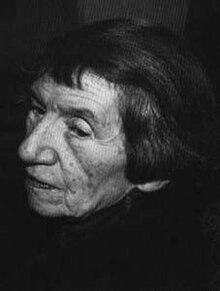
Lyonel Charles Adrian Feininger was a German-American painter, and a leading exponent of Expressionism. He also worked as a caricaturist and comic strip artist. He was born and grew up in New York City. In 1887 he traveled to Europe and studied art in Hamburg, Berlin and Paris. He started his career as a cartoonist in 1894 and met with much success in this area. He also worked as a commercial caricaturist for 20 years. At the age of 36, he began to work as a fine artist. His work, characterized above all by prismatically broken, overlapping forms in translucent colors, with many references to architecture and the sea, made him one of the most important artists of classical modernism. Furthermore he produced a large body of photographic works and created several piano compositions and fugues for organ.
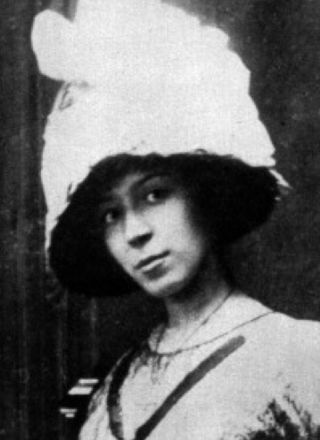
Marie Laurencin was a French painter and printmaker. She became an important figure in the Parisian avant-garde as a member of the Cubists associated with the Section d'Or.
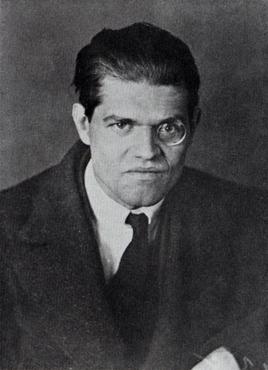
Raoul Hausmann was an Austrian artist and writer. One of the key figures in Berlin Dada, his experimental photographic collages, sound poetry, and institutional critiques would have a profound influence on the European Avant-Garde in the aftermath of World War I.

Hannah Höch was a German Dada artist. She is best known for her work of the Weimar period, when she was one of the originators of photomontage. Photomontage, or fotomontage, is a type of collage in which the pasted items are actual photographs, or photographic reproductions pulled from the press and other widely produced media.

The Songs of Bilitis is a collection of erotic, essentially lesbian, poetry by Pierre Louÿs published in Paris in 1894. Since Louÿs claimed that he had translated the original poetry from Ancient Greek, this work is considered a pseudotranslation. The poems were actually clever fabulations, authored by Louÿs himself, and are still considered important literature.
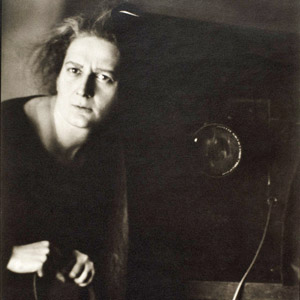
LotteJacobi was a leading American portrait photographer and photojournalist, known for her high-contrast black-and-white portrait photography, characterized by intimate, sometimes dramatic, sometimes idiosyncratic and often definitive humanist depictions of both ordinary people in the United States and Europe and some of the most important artists, thinkers and activists of the 20th century.

Lotte Laserstein was a German-Swedish painter. She was an artist of figurative paintings in Germany's Weimar Republic. The National Socialist regime and its anti-Semitism forced her to leave Germany in 1937 and to emigrate to Sweden. In Sweden, she continued to work as a portraitist and painter of landscapes until her death. The paintings she created during the 1920s and 1930s fit into the movement of New Objectivity in Germany.

Hugo Reinhold Karl Johann Höppener, known under the pseudonym Fidus, was a German illustrator, painter, and publisher. Part of the symbolist movement, his later work took influence from the Art Nouveau and Vienna Secession styles. By the turn of the century, his works were among the most popular in Germany and their rediscovery influenced the Psychedelia movement. Much of his art draws from his beliefs in mysticism and Germanic neopaganism.
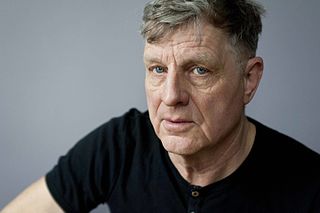
Rainer Fetting is a German painter and sculptor.

The Berlinische Galerie is a museum of modern art, photography and architecture in Berlin. It is located in Kreuzberg, on Alte Jakobstraße, not far from the Jewish Museum. The Berlinische Galerie collects art created in Berlin since 1870 with a regional and international focus. Since September 2010, the museum's director has been the art historian Thomas Köhler, until then deputy director, succeeding Jörn Merkert.
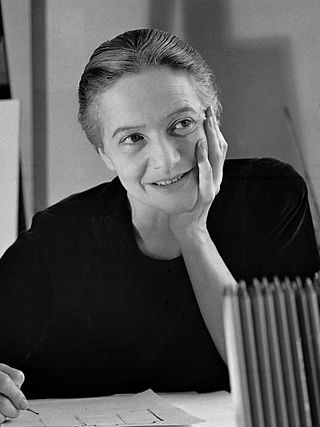
Mariette Lydis (1887–1970) was an Austrian-Argentine painter. Lydis was born in Vienna, Austria on August 24, 1887, under the name Marietta Ronsperger. She was the third child of Jewish merchants, Franz Ronsperger and Eugenia Fischer, and the sister of Richard and Edith Ronsperger, creator of Opera books who later died by suicide. Mariette first married Julius Koloman Pachoffer-Karñy in 1910. She eventually divorced Julius and married Jean Lydis in 1918 to whom she remained married until 1925. In 1928 she married Giuseppe Govone, an art publisher, and formally remained married to him until his death in 1948. However, at the end of the 30s she escaped Paris and the ensuing Nazi roundup of Jews to be briefly in England and from 1940 in Argentina. From 1940 until her death in 1970 she lived in Argentina, with her partner Erica Marx. Lydis lived openly as bisexual. She is best known for her book illustrations and paintings. Mariette died on April 26, 1970, and rests in the Recoleta Cemetery in Buenos Aires.
Frieda Gertrud Riess was a German portrait photographer in the 1920s with a studio in central Berlin.

Annot, also known after her marriage as Annot Jacobi, was a German painter, art teacher, art writer and pacifist. As a result of political hostility in Germany, she spent much of her life in the United States and Puerto Rico.

Jeanne Mandello was a German modern artist and experimental photographer.

Gertrude Sandmann was a German artist and Holocaust survivor.

Rahel Szalit-Marcus was a Jewish artist and illustrator. Born Rahel Markus in Telz [Telsiai] in the Kovno region of Lithuania, then part of the Russian Empire, she was active in Berlin during the Weimar Republic and in Paris in the 1930s. She was best known for her illustrations of East European Jewish subjects. Szalit-Marcus was murdered at Auschwitz in August 1942.

Daum Marries Her Pedantic Automaton "George" in May 1920. John Heartfield is very glad of it. is a painting created by using the combination of pencil, pen, brush and ink, watercolor and collage, by the German artist George Grosz, in 1920. The painting does have an original English title. It is held at the Berlin Landesmuseum fur Moderne Kunst, in the Berlinische Galerie.

Heinz Trökes was a German painter, printmaker and art teacher.
The Verein der Berliner Künstlerinnen is the oldest existing association of women artists in Germany. It maintains the archive Verein der Berliner Künstlerinnen 1867 e. V., publishes club announcements and catalogues, and every two years awards the Marianne Werefkin Prize to contemporary female artists. It thus cultivates cultural memory and promotes the current developments of contemporary artists. The 2007 award winner was the sculptor Paloma Varga Weisz.

Sascha Wiederhold, was a German painter, graphic artist and stage designer.
